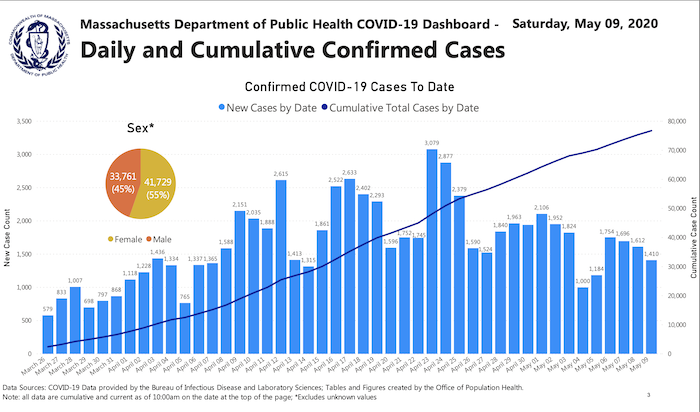Warren calls for $100 billion to help renters during the coronavirus pandemic
United States Senator Elizabeth Warren (D-MA) joined Senator Sherrod Brown (D-OH), Ranking Member of the Senate Committee on Banking, Housing, and Urban Affairs, Congresswoman Maxine Waters (D-CA), Chairwoman of the House Committee on Financial Services, and Congressman Denny Heck (D-WA) in announcing the Emergency Rental Assistance and Rental Market Stabilization Act of 2020.
The legislation would establish an Emergency Rental Assistance program to provide $100 billion in emergency rental assistance to help families and individuals pay their rent and remain housed during and after the coronavirus disease 2019 (COVID-19) crisis. Stabilizing renters and the rental market through this crisis will help the economy recover from the economic aftershocks of the pandemic.
“Stable housing is a basic need for Americans struggling under the weight of this public health emergency,” said Senator Warren. “I’m glad to partner with my colleagues on a bill to help families and individuals in Massachusetts and across the country pay their rent, utility bills, and remain stably housed during and after this devastating pandemic.”
“This pandemic is yet another painful reminder of just how vulnerable millions of workers are to a single setback – whether it is losing your job, a broken-down car, or just being late on rent,” said Senator Brown. “Congress must act now to keep families in their homes. That’s why I am introducing the Emergency Rental Assistance and Rental Market Stabilization Act of 2020 to ensure that renters remain safely and affordably housed during and after this crisis.”
“This legislation would create a $100 billion emergency rental assistance fund to help struggling renters across the nation as well as mom and pop landlords relying on rental payments for their retirement,” said Chairwoman Waters. “We must take immediate action to prevent the COVID-19 crisis from turning into a national eviction crisis. It is absolutely essential for the next COVID-19 relief package to include this bill.”
“Millions of Americans are facing new financial uncertainty, through no fault of their own,” said Congressman Heck. “This bill will help tenants pay their rent, without placing the burden on landlords, many of whom are relying on payments from renters to pay their mortgages. It is vital to our recovery and to the wellbeing of Americans that we do everything we can to keep people in their homes. I will continue working with Chair Waters, Ranking Member Brown, and congressional leadership to ensure we quickly get rent relief to Americans.”
Specifically, the bill would:
– Authorize $100 billion for an Emergency Rental Assistance program to help families and individuals pay their rent and utility bills and remain housed during and after the COVID-19 crisis.
– The program would send funds to communities, states, and tribes through an existing federal temporary rental assistance program to facilitate the rapid distribution of funds through an already-available administrative and reporting system.
The bill is co-sponsored in the Senate by Senators Chris Van Hollen (D-MD), Brian Schatz (D-HI), Catherine Cortez Masto (D-NV), Bob Menendez (D-NJ), Tina Smith (D-MN), Jack Reed (D-RI), Ron Wyden (D-OR), Tammy Baldwin (D-WI), Kirsten Gillibrand (D-NY), Patty Murray (D-WA), Jeffrey A. Merkley (D-OR), Mazie K. Hirono (D-HI), Edward J. Markey (D-MA), Maggie Hassan (D-NH), Kamala D. Harris (D-CA), Cory A. Booker (D-NJ), Dianne Feinstein (D-CA), Debbie Stabenow (D-MI), Richard Blumenthal (D-CT), Dick Durbin (D-IL), Patrick Leahy (D-VT), Amy Klobuchar (D-MN), Bernard Sanders (I-VT), and Michael F. Bennet (D-CO).
More information about the Emergency Rental Assistance and Rental Market Stabilization Act of 2020 can be found here. The bill has been endorsed by a diverse list of housing, state and local government, child advocacy, faith, health care, women’s, civil rights, disability rights, and social welfare organizations. These groups include the National Alliance to End Homelessness, National Low Income Housing Coalition, Children’s Defense Fund, U.S. Conference of Mayors, National Association of Counties, National Urban League, and National League of Cities.
Senator Warren has made it a priority to ensure families and individuals have access to stable housing amid the COVID-19 pandemic. In March, she sent a letter with Senator Merkley and Congresswomen Ayanna Pressley (D-MA) and Katie Porter (D-CA) to the U.S. Department of Housing and Urban Development asking for a moratorium on evicting renters during the coronavirus pandemic. She published an op-ed in which she called for a grassroots economic stimulus package that would protect and expand housing, among other measures. Senator Warren has also introduced legislation to protect individuals experiencing homelessness during the pandemic, and has called on Congress to provide $11.5 billion in the next COVID-19 relief package for states and localities responding to the needs of those experiencing homelessness.




